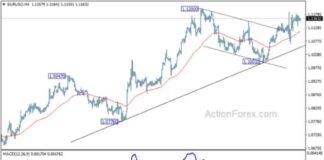The Federal Reserve’s Impact on Commodity Prices: An In-depth Analysis and Forecast
As policymakers gear up to potentially cut interest rates, traders and presidential candidates alike are holding their breath in anticipation of the impact this decision may have on commodity prices. When commodity prices shift in unison, it is typically due to real-world events that shake up the markets. For instance, China’s status as the world’s largest consumer of raw materials means that any fluctuations in its economy can have far-reaching effects on commodity prices. Similarly, Russia’s invasion of Ukraine disrupted the trade of fuels and grains, leading to a surge in prices across the board. However, there are times when it is news within the financial realm that drives traders to make swift decisions, with the Federal Reserve often taking center stage in these instances.
The Federal Reserve, commonly referred to as the Fed, plays a pivotal role in shaping the economic landscape of the United States. As the country’s central banking system, the Fed is responsible for setting monetary policy, including interest rates, to help achieve maximum employment, stable prices, and moderate long-term interest rates. Changes in interest rates can have a profound impact on commodity prices, as they influence borrowing costs, inflation expectations, and overall economic growth.
The Fed’s Influence on Commodity Prices
One of the primary ways in which the Federal Reserve affects commodity prices is through its control over interest rates. When the Fed raises interest rates, borrowing becomes more expensive, leading to a decrease in consumer spending, investment, and overall economic activity. This can put downward pressure on commodity prices as demand wanes. Conversely, when the Fed lowers interest rates, borrowing becomes cheaper, stimulating economic activity and potentially driving up demand for commodities.
In recent years, the Federal Reserve has been closely watched for its decisions regarding interest rates, particularly in light of the economic challenges posed by the COVID-19 pandemic. The Fed took swift action in 2020 to lower interest rates to near-zero levels in an effort to support the economy during a period of unprecedented uncertainty. This move had a significant impact on commodity prices, with many experiencing volatility as markets reacted to the Fed’s policy decisions.
Factors Affecting Commodity Prices
While the Federal Reserve plays a crucial role in influencing commodity prices, there are a multitude of other factors that can also impact the market. Supply and demand dynamics, geopolitical events, weather patterns, and currency fluctuations all play a role in determining commodity prices.
For example, a severe drought in a key agricultural region can lead to a decrease in crop yields, driving up the prices of commodities like wheat, corn, and soybeans. Similarly, political unrest in an oil-producing country can disrupt supply chains and cause oil prices to spike. These external factors can often overshadow the influence of the Federal Reserve on commodity prices, highlighting the complex and interconnected nature of the global commodity market.
Forecasting Commodity Prices
Predicting the future movements of commodity prices is a challenging task, as it requires an understanding of a wide range of variables and market dynamics. Analysts often rely on a combination of fundamental analysis, technical analysis, and macroeconomic indicators to make informed forecasts.
Fundamental analysis involves examining the underlying factors that drive supply and demand for a particular commodity, such as production levels, inventories, and consumption patterns. Technical analysis, on the other hand, involves studying historical price patterns and market trends to identify potential price movements. Finally, macroeconomic indicators, such as GDP growth, inflation rates, and interest rates, can provide valuable insights into the overall health of the economy and its potential impact on commodity prices.
As we look ahead to the coming months, the Federal Reserve’s decisions regarding interest rates will continue to be a major factor in shaping commodity prices. Traders and investors will closely monitor the Fed’s policy statements and economic projections for clues on future rate hikes or cuts. In addition, ongoing global events, such as geopolitical tensions, trade disputes, and climate-related disasters, will also play a significant role in determining the direction of commodity prices.
In conclusion, the Federal Reserve’s impact on commodity prices is a complex and multifaceted issue that requires careful analysis and consideration. While the Fed’s decisions regarding interest rates can have a significant influence on commodity prices, they are just one piece of the puzzle in the ever-evolving world of commodities trading. By staying informed and keeping a close eye on market developments, traders can better position themselves to navigate the challenges and opportunities presented by the dynamic commodity market.

















